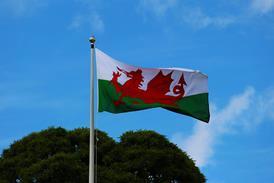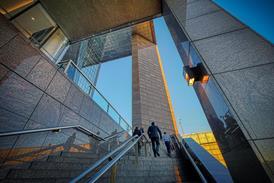PTL's Richard Butcher outlines a process schemes can use to check up on the route and progress of their investments when it comes to sustainability.
This is a shame, and possibly a dereliction of duty, as much can be gained from the process if not the outcome. Why? Because the process is one of control and challenge: two characteristics that, if with no other benefit, reduce operational risk. This article sets out one type of control environment.
The first component of agreeing any control environment, including one relating to investment sustainability, is to decide what your objectives are. This will be arrived at by debate between the affected parties and their advisors, after consideration of all relevant factors. The resulting objectives, or mission statement, then give you the destination you are aiming for.
Key points
Agree what your scheme's objectives are
Decide the best way to get there
Execute your plan, monitoring progress to make necessary adjustments
The second component is to assess the different ways the objectives can be achieved and, through analysis, to select the best plan right now. The plan is equivalent to choosing which motorway or train route you will take to achieve your destination.
The third component is to execute that plan. You will never reach your destination, no matter how well planned, unless you walk out of the front door.
The final component is to periodically monitor your progress by reassessing your objectives and route. Is that destination still where you want to get to, and if so, are you still taking the best way?
At the risk of stating the obvious, sustainable investments are those designed to be sustainable – that is, they will endure over time. As a result they are not selected for ethical reasons but instead for hard financial ones
Be specific on 'sustainability'
At the risk of stating the obvious, sustainable investments are those designed to be sustainable – that is, they will endure over time. As a result they are not selected for ethical reasons but instead for hard financial ones, because the investor wants the option to extract value at some point in the distant future.
Like them or not, wind farms are increasingly common and seen as a core component of the UK’s energy strategy. This means that they may be (should be?) sustainable. Oil, on the other hand, is a commodity that is limited in supply and falling, rapidly, out of favour. It is highly likely to endure in the short and medium term, but over the longer term will decline.
A good sustainable investment control environment will consider these and other arguments, and reach an accepted (even if not perhaps acceptable) position on what to hold, in what proportions and over what duration.
Having set the parameters, and perhaps some control limits, the plan can be executed so that the investor finds themselves, in due course, holding the right proportions of wind and oil for the right periods of time.
The follow-up
The review process is little more than a rehash of the first component, but crucial to ensure the continued success of the strategy. At this point the investor will question their advisors with any material changes to their situation and/or to the markets for wind and oil. The result will be a restatement of the original objectives or the adoption of new, more relevant, plans. Staying on top of the performance of the strategy and making the necessary changes at the right time will be vital to reaching the scheme's ultimate goals.
This process needs to be formal and, as a result, documented – if for no other reason than that any or all parts of the process can involve compromise and even be contentious. It is sensible, therefore, to set it all out in writing so that each party understands what they are entering into. The record can also be used to guide trustees in the future.
After the above is written, the process should also be organic. When describing the process above I used the analogy of a journey. Travel is a part of our daily, routine lives and this should be no different. We instinctively adjust our route and arrival time when we drive somewhere, as we should also when attempting to achieve sustainable investment objectives.
Richard Butcher is managing director at PTL














